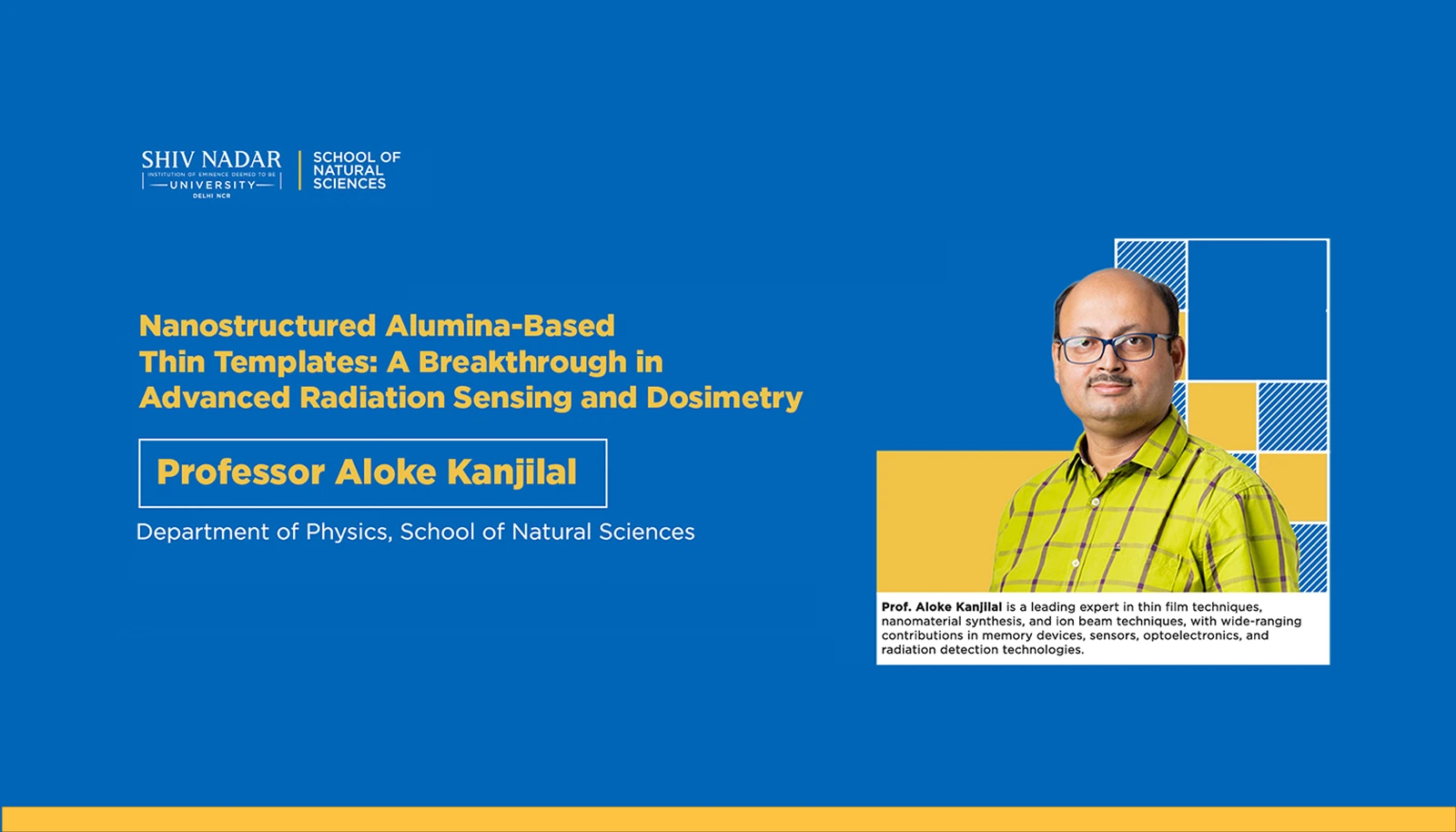Nanostructured Alumina-Based Thin Templates: A Breakthrough in Advanced Radiation Sensing and Dosimetry

Editorial / June 09, 2025
In a significant advancement, researchers at Shiv Nadar University, Delhi-NCR, led by Prof. Aloke Kanjilal, have developed a nanostructured alumina-based thin template for high-performance radiation sensing and dosimetry. This work, conducted in collaboration with BARC, Mumbai, under a recently completed BRNS-funded project, promises to reshape radiation detection, especially in the context of hadron therapy.
The study reveals that annealing alumina thin films, grown via RF magnetron sputtering, at temperatures up to 1200 °C significantly enhances oxygen vacancy concentration. Remarkably, the process also results in self-patterned surface structures, which contribute to heightened sensitivity, enabling detection at extremely high radiation doses (up to 130,000 Gy) during 80 MeV carbon ion irradiation. As online dose monitoring becomes a critical requirement in hadron therapy, such highly sensitive thin-film structures are indispensable.
To evaluate the performance of these materials, a custom-built, wavelength-resolved TL/OSL Reader was developed under the same project. “The development of this TL/OSL Reader in collaboration with BARC marks a crucial step toward translating material innovation into real-world diagnostic and therapeutic applications,” notes Prof. Kanjilal.
Further extending this research, the team explored the effect of carbon doping in anodized alumina (AAO) for ion beam dosimetry. Carbon implantation in AAO enhances its radiation response by increasing blue photoluminescence and prolonged phosphorescence, attributed to oxygen vacancy generation and carbon substitution at aluminum sites. These defect states, confirmed through spectroscopic techniques and simulation studies, boost electron trapping and energy transfer, enhancing both thermoluminescence (TL) and optically stimulated luminescence (OSL) sensitivity.
“By precisely engineering atomic-scale defects, we've tailored the luminescent properties of AAO, making it highly responsive to ion irradiation in a controllable and tunable manner,” explains Prof. Kanjilal.
Together, carbon-doped AAO and annealed alumina thin films show strong potential as next-generation radiation dosimeters, particularly for clinical applications like hadron therapy.
Prof. Aloke Kanjilal is a leading expert in thin-film deposition, nanomaterial synthesis, and ion beam techniques, with wide-ranging contributions in memory devices, sensors, optoelectronics, and radiation detection technologies. His interdisciplinary research emphasizes materials processing, defect engineering, and advanced characterization, with applications in radiation detectors, solar cells, neuromorphic devices, and flexible electronics.
He earned his PhD in Physics from IIT Delhi, specializing in ion beam-assisted material modification. A recipient of the prestigious Alexander von Humboldt Fellowship, Prof. Kanjilal is also a Member of the National Academy of Sciences, India (MNASc) and a Fellow of the Institution of Electronics and Telecommunication Engineers (FIETE).
He holds lifetime memberships in several professional societies, including IPA, MRSI, IBSI, IPTA, and EMSI, and recently joined the Editorial Board of Journal of Physics D: Applied Physics.
With over 126 publications in reputed international journals and two German patents, Prof. Kanjilal continues to drive innovations in radiation dosimetry, data storage, energy harvesting, and beyond.
"Our aim is to develop materials that not only advance the frontiers of science but also make a meaningful impact - enabling cleaner technologies, safer medical treatments, and more intelligent systems," he affirms.
By Srijita Banerjee
More Blogs

The Hawthornden Literary Retreat bestowed on Dr Sambudha Sen to complete the manuscript of a novel
Professor Sambudha Sen, Head of the Department of English at Shiv Nadar Institution of Eminence, Delhi-NCR, was awarded a residency at the...

The Power of the Moving Body
Movement is an innate bodily action that humans have been exhibiting for the longest time. Long before language was invented, the body was the...

How Does A Multi-Disciplinary Approach To Education Enhance Learning And Prepare Students For A Multi-Faceted World?
In today’s world, where businesses are changing almost every day, it is the responsibility of educational institutes to provide holistic...